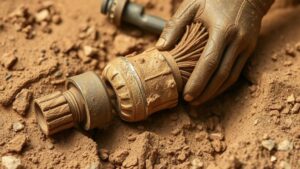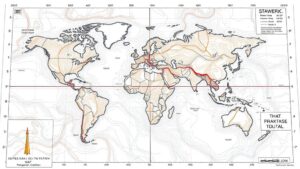Recovering Tools and Equipment in Areas of Early Mining Operations
Recovering Tools and Equipment in Areas of Early Mining Operations
The legacy of early mining operations is etched into the geographical and historical landscape of many regions. Mining, particularly during the 19th and early 20th centuries, was not only pivotal for economic development but also marked by rudimentary practices that often resulted in lost or abandoned tools and equipment. This article examines the methodologies for recovering these tools and equipment, exploring both the techniques employed and the cultural significance of these artifacts.
The Historical Context of Early Mining Operations
Mining has a storied history that dates back centuries, primarily driven by the demand for minerals and fuels. In the United States, the Gold Rush of the mid-19th century catalyzed rapid mining activity. Mercurial advancements in mining techniques, such as the introduction of hydraulic mining, inadvertently contributed to the abandonment of tools and equipment in favor of newer, more efficient technologies. These early mining sites are often littered with artifacts that tell the story of the era.
Types of Tools and Equipment Found
Mining operations in their infancy employed a variety of tools and equipment, which can be classified into several categories:
- Hand Tools: Picks, shovels, and trowels represent the basic necessities of mining.
- Machinery: Early steam engines and hoisting gears were pivotal, although often discarded after a shift in technology.
- Safety Equipment: Miners helmets and lanterns, while essential for safety, were also frequently left behind.
Methodologies for Recovery
The recovery of mining tools and equipment from early sites requires careful planning and consideration of environmental and legal factors. Various methodologies can be employed, tailored to the specific context of each site:
1. Archaeological Surveys
Systematic archaeological surveys are essential for identifying sites with potential artifacts. These surveys can involve:
- Ground Penetrating Radar (GPR): It helps visualize subsurface features without excavation.
- Geomagnetic surveys: These assist in detecting metallic remains, indicating previous mining activity.
These surveys have successfully uncovered significant relics. For example, surveys in California have revealed entire landscapes of abandoned mining operations, aiding in the historical understanding of the Gold Rush.
2. Community Involvement
Engaging local communities often yields fruitful results in recovering mining tools. Citizens who reside in historically significant areas may have insight or even claims to found artifacts. Programs that promote community involvement in recovery projects can serve several purposes:
- Enhancing local heritage awareness
- Sustaining tourism and local economies
Programs like the Ghost Town Preservation Society illustrate the potential for community-led recovery initiatives to foster both education and tourism.
3. Legal and Ethical Considerations
Possessing or excavating tools and equipment from early mining sites often raises legal and ethical questions. Regulations vary by region, stressing the importance of:
- Obtaining permission from local authorities
- Adhering to preservation laws protecting historical sites
For example, the Archaeological Resources Protection Act of 1979 in the United States prohibits excavating on federal land without a permit, emphasizing the need for compliance and respect for cultural heritage.
Case Studies of Successful Recoveries
Numerous case studies exemplify the successful recovery of mining tools and equipment. One notable instance involves the recovery of early placer mining tools in Alaska, leading to the establishment of a public museum dedicated to the Gold Rush era. Through careful excavation and preservation, these artifacts offer invaluable insights into the daily lives of miners and the technological advancements they employed.
Another case study from Australia highlights the recovery of a historical mining site in Victoria, where a consortium of archaeologists and historians employed innovative ground scanning techniques leading to the discovery of a buried steam-powered dredger, now restored and displayed in a national heritage park.
Conclusion
The recovery of tools and equipment from early mining operations not only facilitates a deeper understanding of historical practices but also offers valuable lessons in archaeology, preservation, and community engagement. As technological capabilities advance, so too do the opportunities for discovery and education. Those interested in the field should consider engaging with local archaeological societies, advocating for responsible recovery efforts, and contributing to the documentation of their findings as part of a broader narrative telling the story of mining history.
In summary, recovering tools and equipment from early mining operations is a multifaceted endeavor that intertwines history, archaeology, and community involvement. By employing rigorous methodologies and adhering to ethical standards, we can significantly contribute to the preservation of our mining heritage.



